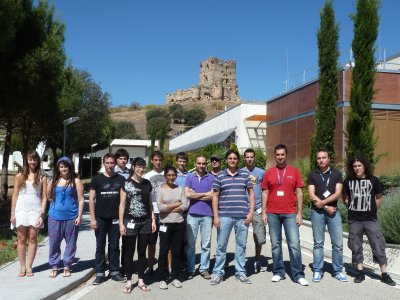2012 SAS Workshop - XMM-Newton
Astronomers come to ESAC to learn how to make the best science with XMM-Newton
Astronomers come to ESAC to learn how to make the best science with XMM-Newton
ESA's XMM-Newton has helped create a highly active X-ray astronomical community throughout the years, thanks, among other things, to educational initiatives such as the SAS Workshop held from 11th to 15th June 2012 at ESAC.
About 20 astronomers from all over Europe have come to learn how to process XMM-Newton observations.
The XMM-Newton Science Analysis System (SAS) Workshops, aim at providing its users, whether or not they have experience in XMM-Newton data analysis, with an introduction to the procedures and techniques to successfully reduce and analyze XMM-Newton data.
Being the 12th edition of the course, one could expect a decrease in the number of attendants, but this is not the case. The SAS Workshop was organized, as usual, for 20 people and this year there was even a waiting list.
Attendees have been mostly students, coming from Russia, Italy, the Czech Republic, Germany, the UK and Spain. They work in AGNs; X-ray binary systems; massive stars; neutron stars; and supernovae remnants. Many of them bring their own data to reduce. The 5-day workshop is structured around half-days of presentations by the SOC members, and half-days of practical training (hands-on) sessions.
"In addition to presentations on the scientific instrumentation onboard XMM-Newton, calibration aspects and data analysis principles, we leave participants working on their own during the hands-on sessions , but we are always there for questions and support", says organizer Ignacio de la Calle. "Our software is not particularly difficult to learn or use, but we offer the students the possibility to talk to the specialists in each XMM-Newton instrument".
Although, after 12 years since the launch of the space observatory, many research institutes have their own expertise in the SAS data analysis. The XMM-Newton SOC will continue organizing such workshops to serve the many newcomers to X-ray astronomy. In exchange, feedback from workshop participants is helping the SOC to further improve the SAS and its documentation.
- Removed a total of (1) style text-align:center;
- Removed a total of (2) style float:left;
- Converted a total of (1) center to div.








































 Sign in
Sign in
 Science & Technology
Science & Technology
